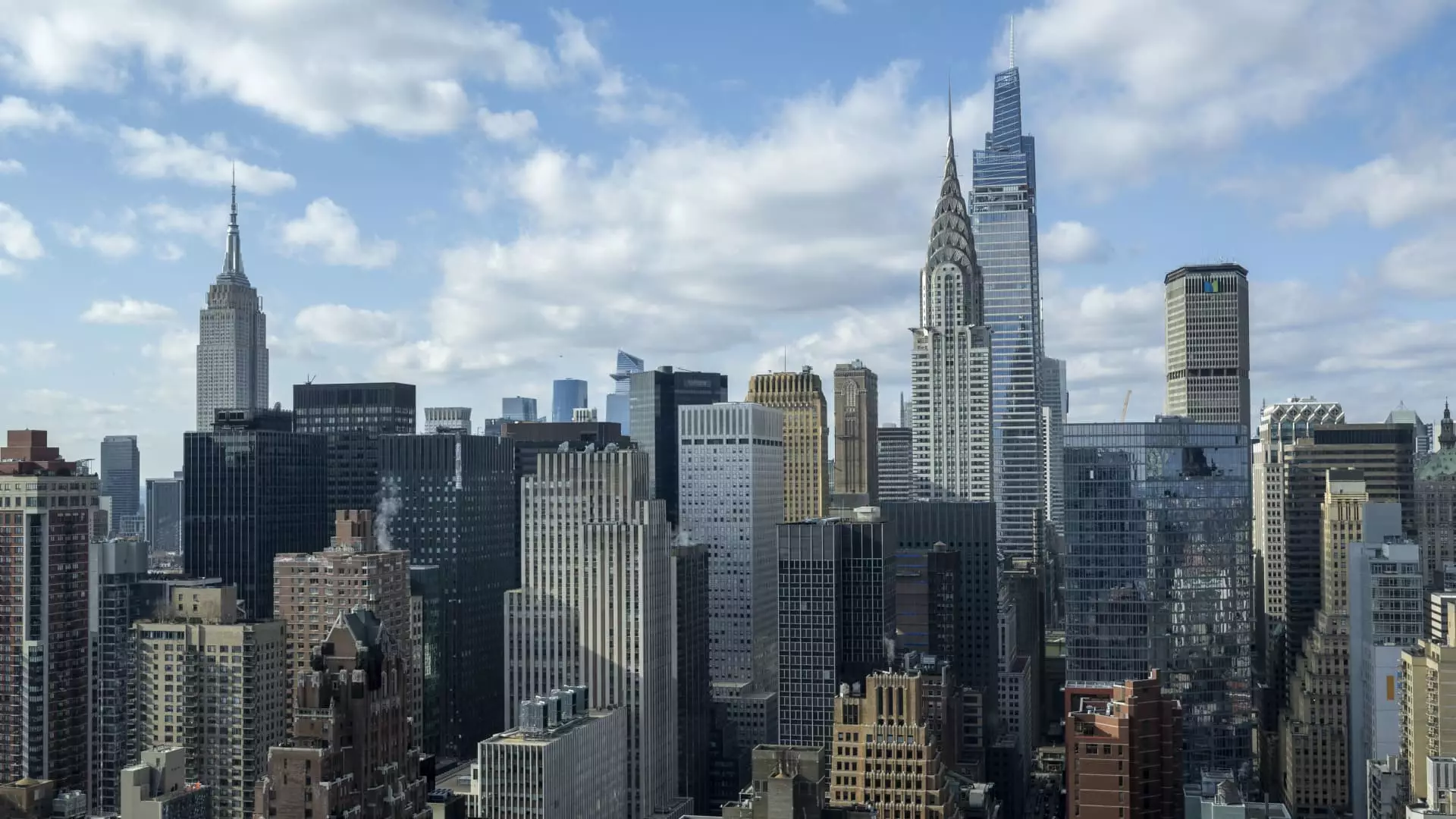New York City is experiencing a remarkable resurgence in the demand for office space, comparable to pre-pandemic levels. After facing unprecedented challenges during the pandemic, the office market is bouncing back, driven by an influx of new employees and strategic efforts by employers to bring current workers back to physical office environments. According to recent data from VTS, a company that tracks office leasing trends, the demand for office spaces surged by 25% in the fourth quarter compared to the previous year. This statistic is measured by unique tours conducted by prospective tenants, serving as a promising indicator of future leasing activity. The resurgence can be attributed to the unique cultural and economic fabric of New York City, particularly in industries such as finance and technology.
SL Green Realty Corp., a major player in the Manhattan office and retail real estate market, recently released its earnings report, which, while slightly below revenue expectations, has garnered attention from analysts who are optimistic about tightening conditions in the office market as demand accelerates. Marc Holliday, CEO of SL Green, pointed out a critical forecast from the city’s Office of Management and Budget anticipating the creation of 38,000 office-related jobs by 2025. These new positions predominantly stem from sectors like finance, business services, and information technology, further highlighting the reliance on physical office spaces. Holliday emphasized that each new job translates into substantial additional demand for office space, with most of these positions not aligned with work-from-home arrangements.
The push to return to the office is not just a fleeting trend; rather, it reflects a broader strategy by companies to improve collaboration and productivity. As employers increasingly call employees back to the office on a regular basis, occupancy rates are steadily rising. SL Green concluded the previous year with an impressive occupancy level of 92.5%, and the projection for the upcoming year exceeds 93%. This upward trend underscores a significant revitalization in the demand for office environments.
A key indicator of this office demand revival was IBM’s recent signing of a significant expansion lease. The tech giant committed to leasing an additional 92,663 square feet at One Madison Avenue, increasing its total space in the building to over 362,000 square feet. IBM’s expansion not only reflects its confidence in New York City but also showcases a commitment to fostering a collaborative environment. Joanne Wright, an executive at IBM, articulated the company’s vision of creating a vibrant workspace that not only brings together employees but also fosters interaction with clients and partners globally.
While New York City demonstrates significant revitalization in its office market, other regions are also witnessing varying degrees of improvement. For instance, San Francisco recorded an impressive 32% growth in office demand on an annual basis—albeit starting from a lower baseline. Seattle and Chicago are similarly experiencing growth figures around 15%, indicating that the push for in-office attendance remains a trend across various cities. Ryan Masiello, chief strategy officer at VTS, pointed out that this renewal of demand in New York City stands in contrast to the gradual recovery seen nationwide.
Nationally, office demand saw a 12% increase in the fourth quarter compared to the previous quarter, which is particularly noteworthy considering historical trends show typical declines during this time. Such growth amidst a cooling labor market showcases a shift in corporate sentiment about investing in office spaces. Companies are increasingly willing to take on long-term planning strategies despite existing economic uncertainties. This shift indicates a renewed confidence in the workplace as organizations now recognize the intrinsic value of collaboration and face-to-face interaction, essential components in fostering innovation and team cohesion.
New York City’s office space market is not only recovering but thriving as companies grapple with the implications of post-pandemic operations. With rising occupancy rates, substantial new job forecasts, and significant corporate commitments to office expansion, the narrative of the office as a crucial element in organizational success is being reinstated. As we move forward, monitoring these dynamics will be essential in understanding the future landscape of office spaces not just in New York City, but across the entire nation.

